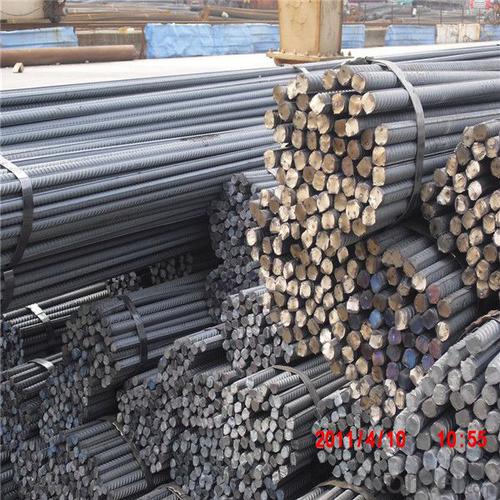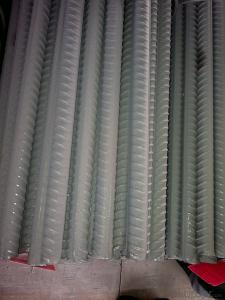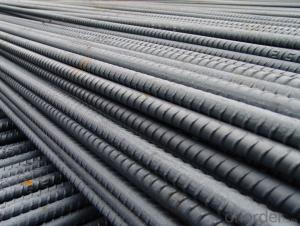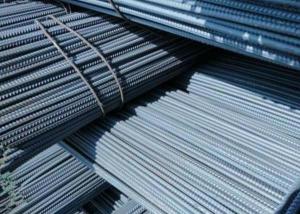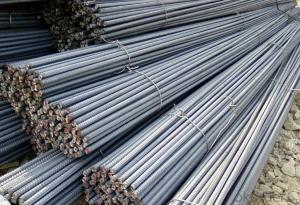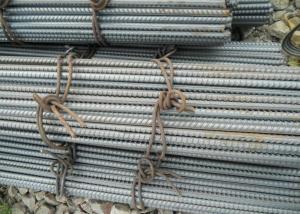TMT Reinforcing steel rebar Building Material
- Loading Port:
- Shanghai
- Payment Terms:
- TT OR LC
- Min Order Qty:
- 100 m.t.
- Supply Capability:
- 19000 m.t./month
OKorder Service Pledge
OKorder Financial Service
You Might Also Like
Specification
Steel rebar is bars of steel commonly used in construction, especially for reinforcing concrete structures such as
driveways, foundations, walls, and columns. These bars come in different sizes and strength grades, and can be smooth
or may include deformations that provide greater adhesion for concrete poured over the bars. When used in poured concrete,
the bars are typically placed in a grid pattern, the concrete poured over them, and then readjusted to maintain the proper shape
while the concrete sets. Steel rebar can be purchased from a number of manufacturers and is often found at construction retailers
or large hardware stores.
Features
1、Pure steel quality, stable chemical contents, small tolerance.
2、Constant Quality, good drawing performance.
3、High dimension accuracy degree, accuracy degree of Level C up to 80%, smooth surface, less scale, easy to be pickled.
4、Automatic bundling with 4 lines by Machine in tidy and good looks
5、Big high quality percentage, small coil percentage, and heavy coil weight for Hard Coil.
6、High sorbitizing percentage.
Product Description :
Chemical composition (%): | Steel | C | Si | Mn | P | S | Ceq | ||||
HRB335 |
0.25 |
0.80 |
1.60 |
0.045 |
0.045 | 0.52 | |||||
HRB400 | 0.54 | ||||||||||
HRB500 | 0.55 | ||||||||||
Mechanical properties | Steel | Rel/ MPa | Rm/ MPa | A/ % | Agt/ % | ||||||
≥ | |||||||||||
HRB335 | 335 | 455 | 17 |
7.5 | |||||||
HRB400 | 400 | 540 | 16 | ||||||||
HRB500 | 500 | 630 | 15 | ||||||||
Package: | Standard export packing or as customer's request | ||||||||||
Application: | Construction, building, bridge, road. ect | ||||||||||
Payment terms | 1).100% irrevocable L/C at sight. | ||||||||||
Delivery time | 15-30 days after receipt of L/C or deposit by T/T | ||||||||||
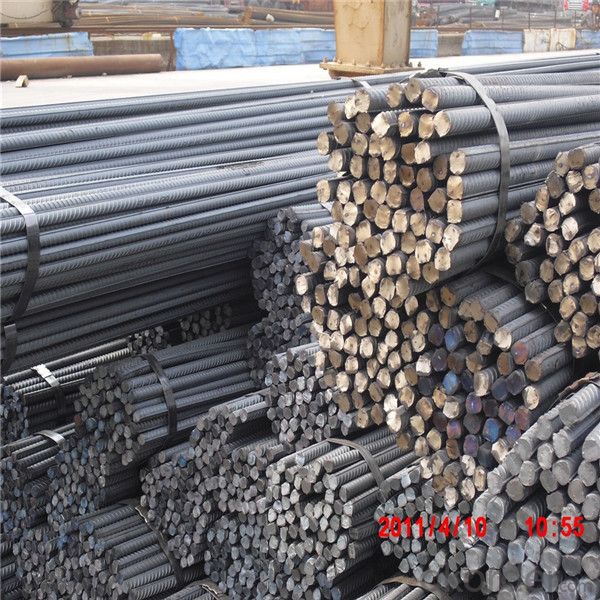

Packing:
In bundles, each bundle weight 3.5 tons. Load by container or by bulk verssel.
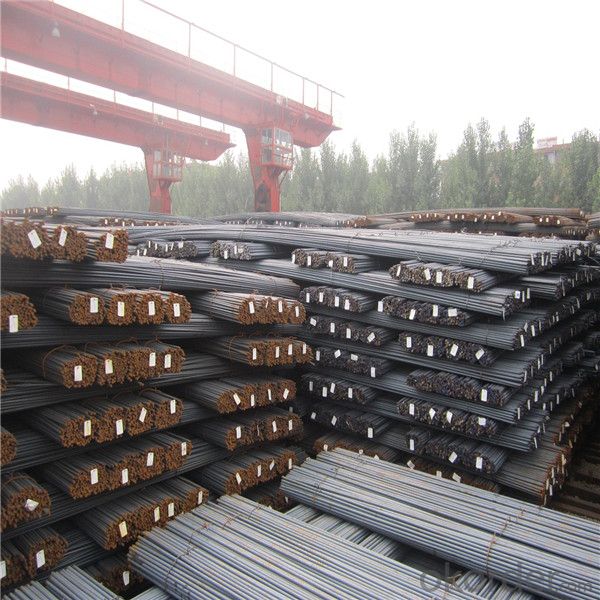
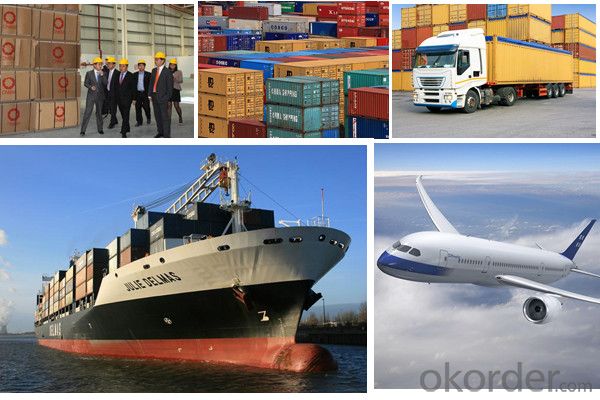
Our service
(1) We cooperate with famous factories with advanced equipment and well trained workers.
(2) We can provide factory price with trading company service.
(3) We continuously work on the improvement of our processes, guaranteeing consistently high standards
of quality to keep none compensation.
(4) We guarantee 24 hours response and 48 hours solution providing service.
(5) We accept small order quantity before formal cooperation.
(6) We deliver the agreed quality at the agreed time, reacting to changes in customer wishes in a flexible way.
(7) Due to our volume and selling power, we have excellent freight rates with shipping lines.
(8) We strive to always be fair and honest in our dealings with customers.
(9) We strive to work together with customers to achieve much more than we can achieve alone.
(10) Through our passion and commitment we aim to be a market leader in all our key markets. To maintain
our position as market leader we must continue to add value in all that we do.
FAQ:
1.Q: What's your MOQ(minimum order quantity)?
A: One full container, mixed acceptable .
2. Q: What's your packing methods?
A: Packed in bundle or bulk ..
3. Q: How can I buy CNBM products in my country?
A:Please send us an inquiry or email ,we will reply to you if there is distributor in your country
4. Q: Can we visit your factory?
A: Warmly welcome. Once we have your schedule, we will arrange the professional sales team to follow up your case.
5. Q: How long does it take to get the product if i place an order?
A:With the process of your requirements,we will pack and deliver in 3-7 days. If it is by sea shipment,it will take 15-45 days depending on different locations
- Q: Are steel rebars easy to work with?
- The ease or difficulty of working with steel rebars depends on the task at hand and the level of experience and skill of the individual. Generally, steel rebars are valued for their strength and durability, making them a popular choice in construction projects. Their standardized sizes and uniform shape make them relatively easy to handle and manipulate. However, caution and specific techniques are required when working with steel rebars. The physical demands of cutting and bending rebars may necessitate the use of specialized tools like rebar cutters and benders. Additionally, the weight of rebars, especially longer and thicker ones, can pose a challenge. Moreover, safety precautions are essential when working with steel rebars. Wearing protective gear such as gloves and goggles is crucial to prevent injuries. It is also necessary to be mindful of potential hazards like sharp edges and protruding rebars. In conclusion, while experienced professionals may find working with steel rebars relatively easy, individuals with limited knowledge or tools may face challenges. It is advisable to seek proper training and guidance to ensure safety and achieve accurate results.
- Q: What are the different types of steel rebars used in foundation construction?
- There are several types of steel rebars commonly used in foundation construction, including plain round bars, deformed bars, epoxy-coated bars, and galvanized bars. Plain round bars are smooth and have no surface deformations, making them suitable for lightweight applications. Deformed bars have ribs, lugs, or other surface deformations that provide better bonding with concrete and enhance the strength of the foundation. Epoxy-coated bars are coated with a layer of epoxy to protect against corrosion, making them ideal for areas with high moisture or chemical exposure. Galvanized bars are coated with a layer of zinc to prevent rusting and corrosion, making them suitable for outdoor or marine environments.
- Q: What are the different types of steel rebars used in marine constructions?
- Marine construction commonly utilizes various steel rebars due to their specific properties and resistance to corrosion in saltwater environments. The different types of steel rebars employed in marine constructions are as follows: 1. Stainless steel rebars prove highly resistant to corrosion, making them an ideal choice for marine applications. Their chromium content creates a protective oxide layer on the surface, preventing rust and corrosion. These rebars come in different grades, such as 304 and 316, with 316 being the most commonly used due to its superior corrosion resistance. 2. Galvanized steel rebars, which are carbon steel rebars coated with zinc, act as a barrier against saltwater corrosion. These rebars are cost-effective and widely utilized in marine constructions. 3. Epoxy-coated steel rebars consist of carbon steel rebars coated with epoxy. This coating acts as an effective barrier between the steel and the saltwater environment, providing excellent corrosion protection. Epoxy-coated rebars are commonly employed in marine structures exposed to seawater or other corrosive agents. 4. Fiberglass rebars, made of high-strength glass fibers embedded in a polymer matrix, offer lightweight, non-corrosive alternatives to traditional steel rebars in marine constructions. Additionally, they possess high tensile strength and do not corrode in saltwater environments. 5. Titanium rebars, although more expensive than other steel rebars, are extremely corrosion-resistant and lightweight, making them suitable for marine applications. They are typically used in high-performance marine structures or specific applications where corrosion resistance is crucial. Each type of steel rebar mentioned above possesses unique advantages and limitations. The selection of the appropriate type depends on factors such as project requirements, budget, and environmental conditions. Engineers and designers must consider these factors to ensure the durability and longevity of marine construction structures.
- Q: What are steel rebars made of?
- Reinforcement bars, commonly known as steel rebars, are primarily composed of carbon steel. Carbon steel is an alloy of iron and carbon, with the addition of small quantities of other elements like manganese, silicon, and copper to enhance its properties. Steel rebars typically contain a carbon content ranging from 0.2% to 0.3%, which imparts the necessary strength and durability needed for reinforcing concrete structures. To shape and size the steel, hot rolling is employed, involving the heating of the material to high temperatures and passing it through rollers. This process enhances the mechanical properties and structural integrity of the rebars, making them suitable for concrete construction applications that necessitate added strength and support.
- Q: What is the effect of moisture content on the strength of steel rebars?
- The strength of steel rebars can be significantly affected by their moisture content. When exposed to moisture, particularly water or high humidity, corrosion can occur. This happens when the moisture reacts with the iron in the steel, resulting in the formation of iron oxide or rust. As a result, the steel rebars weaken and their overall strength is reduced. Moisture presence speeds up the corrosion process, causing the gradual loss of structural integrity in the steel rebars. Corroded rebars become brittle and are more prone to fractures or failure when subjected to a load. This can be especially problematic in construction projects that utilize steel rebars to reinforce concrete structures, as the corrosion compromises the durability and safety of the entire structure. Moisture not only directly impacts the strength, but it also contributes to other issues such as cracking, spalling, and concrete degradation. When moisture interacts with the concrete surrounding the steel rebars, it leads to expansion and contraction, resulting in internal stress and potential damage. This further weakens the rebars and the overall structure. To counteract the negative effects of moisture on steel rebars, several protective measures can be adopted. These measures may include the use of corrosion-resistant coatings like epoxy or zinc, which act as a barrier between the rebars and moisture. Additionally, ensuring proper drainage and ventilation in construction projects can prevent the accumulation of moisture, reducing the risk of corrosion and maintaining the strength and longevity of the steel rebars. In conclusion, it is vital to carefully consider the moisture content and its potential impact on steel rebars in any construction project. By addressing and managing moisture, engineers and builders can guarantee the structural integrity and safety of the steel rebars, ultimately improving the strength and durability of the entire structure.
- Q: What is the average lifespan of steel rebars in a structure?
- The average lifespan of steel rebars in a structure can vary depending on various factors such as the quality of the steel, environmental conditions, and maintenance practices. However, in general, steel rebars are designed to have a lifespan of around 50 to 100 years in a well-maintained structure.
- Q: How are steel rebars used in the construction of oil and gas refineries?
- The strength and durability of steel rebars make them widely used in the construction of oil and gas refineries. These rebars, made from high-strength steel, reinforce concrete structures and increase their load-bearing capacity. In the construction of oil and gas refineries, steel rebars are primarily utilized in various reinforced concrete structures like foundations, columns, beams, slabs, and walls. These structures are crucial for supporting heavy equipment, storage tanks, processing units, and other essential refinery components. During construction, rebars are embedded in the concrete, forming a reinforced framework that can withstand high loads, seismic activity, and extreme weather conditions. The steel reinforcement enhances the concrete's tensile strength, making it more resistant to cracks and structural failure. Furthermore, the use of rebars ensures the long-lasting nature of refinery infrastructure. Oil and gas refineries operate in harsh environments with exposure to chemicals, high temperatures, and corrosive agents. Steel rebars possess excellent corrosion resistance, which is vital for maintaining the structural integrity of the refinery. Moreover, rebars facilitate the construction of complex shapes and configurations required in refinery structures. They can be bent, cut, and molded to fit specific design requirements, enabling the creation of intricate concrete structures essential for the refinery's functionality. Overall, steel rebars play a vital role in oil and gas refinery construction, providing necessary reinforcement to concrete structures. Their strength, durability, and corrosion resistance make them ideal for enduring the demanding conditions in these facilities, ensuring the safety and longevity of the refinery infrastructure.
- Q: How do steel rebars affect the overall fire rating of a building?
- Steel rebars can have a positive impact on the overall fire rating of a building. By reinforcing concrete structures, rebars can help enhance the fire resistance of the building. Steel has high melting and ignition temperatures, which means it can withstand heat and maintain its structural integrity for longer periods during a fire. This additional durability provided by rebars can help prevent structural collapse, allowing occupants more time to evacuate safely and aiding firefighters in their efforts to suppress the fire.
- Q: What is the minimum lap length required for steel rebars in concrete?
- The minimum lap length required for steel rebars in concrete is typically specified by engineering codes and standards, which vary depending on factors such as the type of rebar, the diameter of the rebar, and the intended structural design. It is important to consult the specific code or standard relevant to the project to determine the minimum lap length requirements.
- Q: What are the guidelines for repairing or replacing corroded steel rebars in existing structures?
- The severity of corrosion and project-specific requirements determine the guidelines for repairing or replacing corroded steel rebars in existing structures. However, there are some general guidelines that can be followed: 1. Before proceeding with any repairs or replacements, conduct a thorough assessment of the corrosion damage. This may involve visual inspections, non-destructive testing, or laboratory analysis of samples taken from the rebars. 2. Always prioritize safety when working with corroded rebars. Take adequate precautions to ensure the safety of workers and surrounding areas. This may include using personal protective equipment and creating a stable work environment. 3. Determine the extent of corrosion and its impact on the structural integrity of the rebars. This will help determine whether repair or replacement is necessary. 4. Use various repair methods depending on the severity of corrosion. These methods may include removing the corroded portion of the rebar and applying a corrosion inhibitor or protective coating. Electrochemical techniques such as cathodic protection can also be used to prevent further corrosion. 5. If repair is not feasible due to extensive corrosion damage, consider replacing the corroded rebars. The replacement rebars should be of the same or higher grade and properly anchored to maintain the structural integrity of the existing structure. 6. Consider the design requirements of the structure when repairing or replacing corroded rebars. The repaired or replaced rebars should meet the necessary load-bearing capacity and be properly integrated into the existing structure. 7. Implement rigorous quality control measures throughout the repair or replacement process to ensure the effectiveness and durability of the repairs. This may include regular inspections, testing, and monitoring of the repaired or replaced rebars. It is important to note that these guidelines are general recommendations and should be customized to the specific circumstances and requirements of each project. Therefore, it is advisable to consult with a structural engineer or a professional experienced in repairing corroded steel rebars for a more accurate and detailed guideline.
Send your message to us
TMT Reinforcing steel rebar Building Material
- Loading Port:
- Shanghai
- Payment Terms:
- TT OR LC
- Min Order Qty:
- 100 m.t.
- Supply Capability:
- 19000 m.t./month
OKorder Service Pledge
OKorder Financial Service
Similar products
Hot products
Hot Searches
Related keywords


